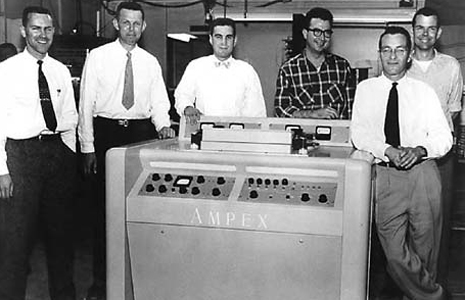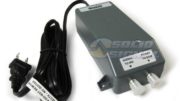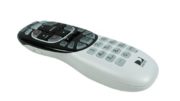Today we take high definition television for granted. It’s not really “high definition” if you think about it. It’s really just “television.” There are a few local shows that still use SD but that number is really small. Today, it simply doesn’t cost any more to produce in HD and it’s how all studios are set up.
That wasn’t always the case. If you look at the period between 1995 and 2010 (roughly) you’ll see that every studio had its own answer to how they produced TV shows. Some of those methods have aged well, and some have aged poorly. The worst methods mean that some of the top shows of the 2000s will never be seen in HD.
When did shows start being produced in HD?
That’s a tough question to answer. You really have to look back to the 1950s and 1960s surprisingly. Back then most shows were shot and edited on 35mm film. 35mm film back then had about the same resolution as HDTV, so you could say those shows were produced in HD. Obviously you didn’t need that level of quality then but it was easier to shoot in 35mm and produce high-quality masters. It was more expensive but remember that at that time, broadcast networks were basically money-making machines. They controlled 90% of the TV viewing audience in prime time.
So, masters were often made in 35mm. Some local stations got broadcasts over phone lines and later satellite, in a sort of primitive internet setup. Others got shows sent to them on 16mm film. 16mm was really quite compatible with standard definition, and viewers couldn’t really tell the difference.
Then came video tape.

Believe it or not, video tape has been around since the early days. This photo dates back to about 1956 and the big grey thing in the middle is a very early video tape recorder. Back then only the most expensive production facilities could afford them. VTRs weren’t anywhere near as good as film cameras but they were a way to easily record the signals from a video camera. Up until VTRs became common, if you wanted to record a live broadcast — I swear I am not making this up — you had to point a film camera at a television screen. Yes really.

It wasn’t until the late 1960s that it was really possible to cheaply produce TV programs on video tape cassettes. I actually worked with the very beast in this picture and it was awesome. That is, if you wanted a device the size of a small desk that hummed and buzzed and clicked and recorded 45 minutes of video.
Still, video tape kept getting cheaper and it enabled a whole generation of TV shows to be shot “live on tape” less expensively than ever before. By the late 1970s most sitcoms were produced on video rather than being shot on film. That means they are permanently reduced to standard-definition quality. There’s nothing that can be done to improve them. Sad news indeed for fans of Three’s Company and Charles in Charge, if there are any,
Things got worse in the 2000s… by trying to get better
As I said at the beginning, people really wanted to see improved quality in the 2000s. Japan started producing HD broadcasts in the 1990s and I think most broadcasters knew it would just be a matter of time before HD came here. As TVs got larger and larger people really began to appreciate the quality of shows on film and digital technology started to come in as well. Starting about 1990 many shows were shot on film and then edited on video tape. It had become increasingly cheap to scan film and edit that way. Most of the top shows of the day were shot on film because film lent a “quality” look to them, but edited on video because it was cheaper and faster.
However, by the late 1990s there was another option. Digital filters were developed that made video “look like film.” Think about what you do on instagram but much more primitive. So, around the turn of the millennium there was actually a rise in shows shot on video. Film looked like an expensive relic.
Sadly this meant that shows like the first six seasons of Will&Grace are forever consigned to standard definition. The “film filter” looked good in SD but on today’s TVs it just makes the shows look dark and cloudy.
The early-2000s had a different option.

Unbeknownst to most of us, some shows started HD production very early. Despite starting in 1996, Everybody Loves Raymond has always been produced in HD. Some of those early shows are very pink and weirdly composed because no one really knew how to light for HD yet. Law and Order also started mastering in HD fairly early, although the show was produced on film until the mid-2000s so that did make it easier.
At the same time, older shows were remastered in HD by scanning the original 35mm masters. Later, shows like Friends, Seinfeld, and Star Trek were re-edited, shot-for-shot, by scanning the original negatives. This let producers decide whether or not to put these once square-format shows in wide-screen. Friends remains one of the most popular shows in the world in part because it looks modern-ish. Sure, the fashions are dated, but at least the show isn’t terminally blurry. This explains why you can watch Hogan’s Heroes in HD but you can’t watch Night Court that way. (For some bizarre reason Hogan’s Heroes was one of the first shows converted from film to HD.)
Today as far as I know every network show is shot in HD. Those “film” filters have gotten a lot better so that you really do get a quality, moody look even if the camera is digital. But unfortunately, a lot of shows shot on video are lost forever to new audiences. No one wants to watch a big, blurry mess even if it’s incredibly funny.





